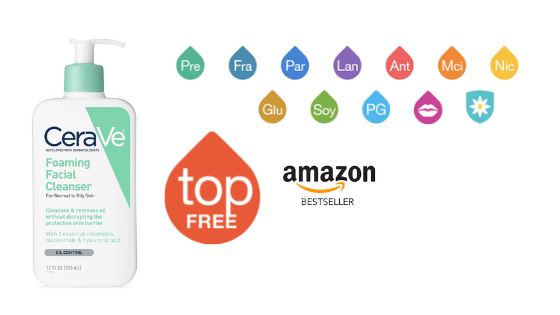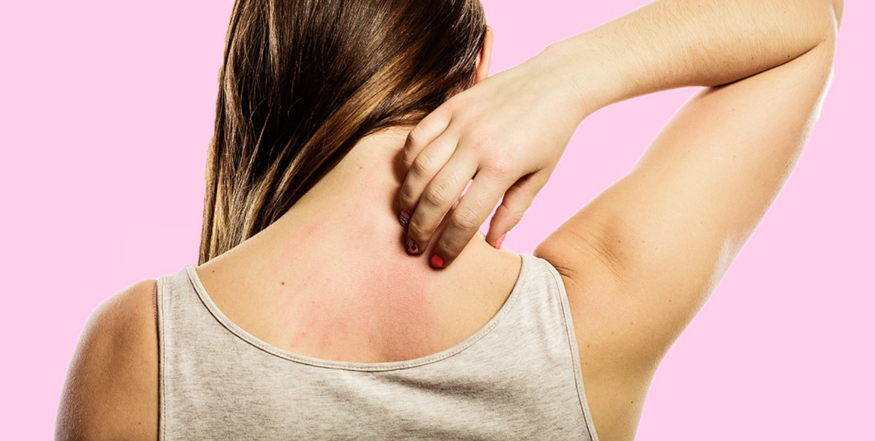Eczema, also called dermatitis, is not a single condition. There are several types. However, the collective term refers to a noncontagious and superficial inflammation of the skin. In the early stages, the affected skin is red and itching. Blisters or lesions develop. They become crusty, scaly and ooze a serous fluid.
Atopic Eczema
Atopic eczema, the most common type of eczema, is a chronic skin condition caused by a hypersensitivity reaction. It is common in infants, tends to run in families and resolves in many children by the age of two. (1) About 50 percent of affected individuals continue to have symptoms into adulthood. Individuals with this type of eczema tend to have asthma and hay fever. (2)
In infants, skin lesions develop on the scalp, face, hands and feet. These blisters may ooze and become crusty. In older children and adults, the itchy patches form on the bends of the elbows, backs of knees, ankles, wrists, face, neck, and upper chest. A rash often appears where the skin has been scratched. Untreated, the affected skin will thicken. (2)
Allergies to pollen, mold, dust mites or animals, exposure to environmental irritants, the common cold or influenza, dry skin and exposure to dyes or fragrances are some factors that trigger atopic eczema.
Avoiding allergens and irritants, moisturizing the skin with hypoallergenic products, using a humidifier in the home and applying cool compresses may relieve symptoms. Antihistamines with a non-drowsy formula can help relieve itching without causing sleepiness. Most cases are treated with prescribed topical steroid cream. (1) Oral or injectable steroids may be used to treat severe cases. Immunotherapy and oral immunosuppressant medications are additional treatment options.
Dyshidrotic Eczema
Dyshidrotic eczema occurs twice as often in women than men and tends to appear during certain times of the year, particularly in humid weather. (2) Typically, adults develop this skin condition between the ages of 20 and 40 years old. Dyshidrotic eczema develops rarely in children but children with atopic eczema are at a higher risk.
Vesicles, which are small fluid-filled blisters, form on the sides of the fingers palms of the hands and the soles of the feet. (2) The blisters cause intense itching and scaly patches of red, cracked and painful skin that flakes constantly. (1) Some individuals have outbreaks that resolve in two to three weeks without treatment. In other cases, outbreaks range in frequency from once a month to once a year.
Stress, allergies such as hay fever and prolonged exposure of the hands to water or moisture and contact with cement, chromium, cobalt and nickel increase the risk of developing dyshidrotic eczema.
Avoiding allergens and irritants, reducing stress, protecting the hands and feet from exposure to irritants and avoiding excessive sweating and dry conditions may relieve symptoms. Cold compresses and topical corticosteroids are recommended. An anti-itching medication, such as Benadryl, can help relieve the itching. To treat severe symptoms, a dermatologist may recommend oral steroids, cold tar preparations or ultraviolet light therapy.
Seborrheic Eczema
Seborrheic eczema is a common type of skin inflammation which develops at any age after puberty. Yellowish, oily and scaly patches of skin form on the scalp, face and other parts of the body, such as the skin folds of the armpits and groin. Generally, it occurs where the skin is oily.
Dandruff is an example of seborrheic eczema. Seborrheic eczema is thought to be an inflammatory reaction to the proliferation of normal yeast found on the scalp. (3) This yeast-like fungus called malazzemia lives on the scalp of most healthy adults without causing problems. (4)
Individuals with immunodeficiency, heavy alcohol consumption or neurological disorders such as Parkinson’s disease, have an increased risk for developing this type of eczema.
Good hygiene plays a key role in the management of seborrheic eczema. Frequent washing with soap and water is recommended to remove oils from affected areas. Antifungal preparations and anti-inflammatory agents, such as topical steroids, are often prescribed. In severe cases, salicylic acid or coal tar preparations may be used to remove dense scale. Then, topical steroids may be applied. (5)
Sources
(1)Medline Plus: Atopic Eczema, Dec. 6, 2011
http://www.nlm.nih.gov/medlineplus/ency/article/000853.htm
(2)EczemaNet: Atopic Dermatitis, Dec. 6, 2011
http://www.skincarephysicians.com/eczemanet/atopic_dermatitis.html
(3)DermNet NZ: Seborrhoeic Eczema, Dec. 6, 2011
http://dermnetnz.org/dermatitis/seborrhoeic-dermatitis.html
(4)Mayo Clinic: Dandruff- Causes, Dec. 6, 2011
http://www.mayoclinic.com/health/dandruff/DS00456/DSECTION=causes
(5) American Family Physician: Treatment of Seborrheic Dermatitis, Betty Anne Johnson, MD, et al,
May 2000, 1; 61(9):2703-2710, Dec. 6, 2011
http://www.aafp.org/afp/2000/0501/p2703.html
Reviewed December 7, 2011
by Michele Blacksberg RN
Edited by Jody Smith





Add a CommentComments
There are no comments yet. Be the first one and get the conversation started!